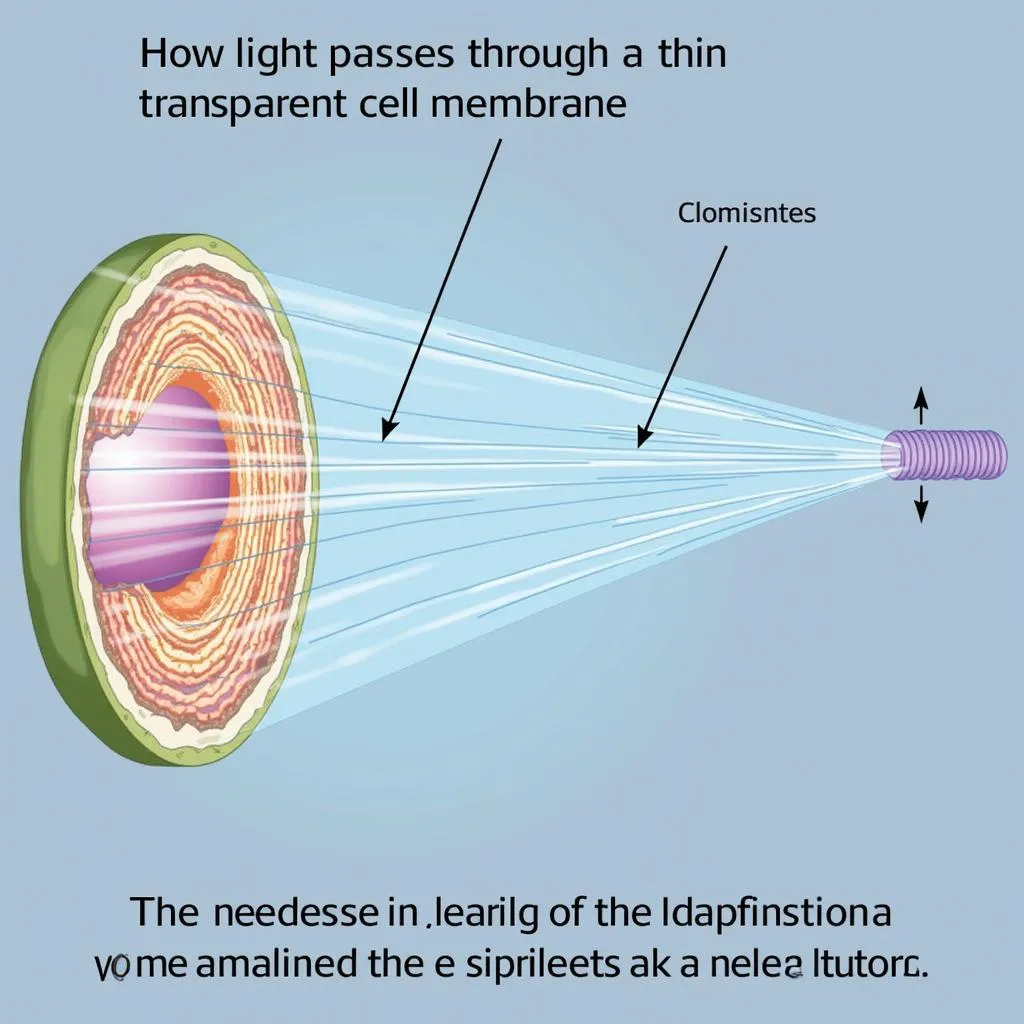When we imagine the vibrant world of cells, we often picture colorful illustrations in textbooks. But have you ever wondered about the actual color of a cell membrane? Is it as bright and colorful as those diagrams suggest? The answer, as with many things in science, is a bit more complex than you might think.
Unmasking the Cell Membrane: A Closer Look
Before we delve into the color, or lack thereof, of a cell membrane, let’s understand its structure and function. The cell membrane, also known as the plasma membrane, is the protective barrier that surrounds all cells. It’s made up of a double layer of phospholipids, which are molecules with a hydrophilic (water-loving) head and a hydrophobic (water-fearing) tail. This unique arrangement creates a semi-permeable membrane that controls what enters and exits the cell.
 Structure of a Cell Membrane
Structure of a Cell Membrane
Color and Light: Understanding the Basics
We perceive color due to the way light interacts with objects. When light hits an object, some wavelengths are absorbed, while others are reflected. The reflected wavelengths reach our eyes, and our brains interpret them as color. For instance, a leaf appears green because it absorbs most wavelengths of light except green, which is reflected.
The Cell Membrane’s True Colors: Why We Can’t See It
Now, back to our initial question: what color is a cell membrane? The truth is, cell membranes are incredibly thin, measuring only a few nanometers thick. This means they don’t reflect enough light for our eyes to perceive a color. In essence, cell membranes are colorless or transparent.
 Light Interaction with a Cell Membrane
Light Interaction with a Cell Membrane
The Illusion of Color: How We Visualize Cells
So, why do textbooks and scientific illustrations often depict cells and their membranes in vibrant colors? The answer is simple: visualization. Color helps scientists differentiate various cellular structures and processes. By using dyes and stains in microscopy, researchers can highlight specific components of the cell, making them easier to study and understand.
Beyond Color: The Beauty of Cell Membrane Function
While we can’t see the color of a cell membrane with the naked eye, its intricate structure and vital functions are a testament to the beauty and complexity of life at the microscopic level. The cell membrane acts as a gatekeeper, a communicator, and a protector, ensuring the cell’s survival.
Frequently Asked Questions
1. Do all cell membranes look the same?
While the basic structure of a cell membrane is similar across different organisms, there can be variations in the types and quantities of proteins, carbohydrates, and other molecules embedded within the membrane. These variations contribute to the specific functions of different cell types.
2. Can we manipulate the color of a cell membrane?
Scientists can use fluorescent tags or dyes to label specific molecules within the cell membrane, making them visible under a fluorescence microscope. This technique is widely used in research to study membrane dynamics and protein interactions.
Need Help with Your Color Journey?
At Color Box Hanoi, we are passionate about exploring the world of color, even at the microscopic level! While we might not be able to paint your cells, we can certainly help you create a vibrant and inspiring living space that reflects your unique style and personality. Contact us today at 0373298888, email us at [email protected], or visit our showroom at 86 Cầu Giấy, Hà Nội. Our team of color experts is available 24/7 to assist you.

